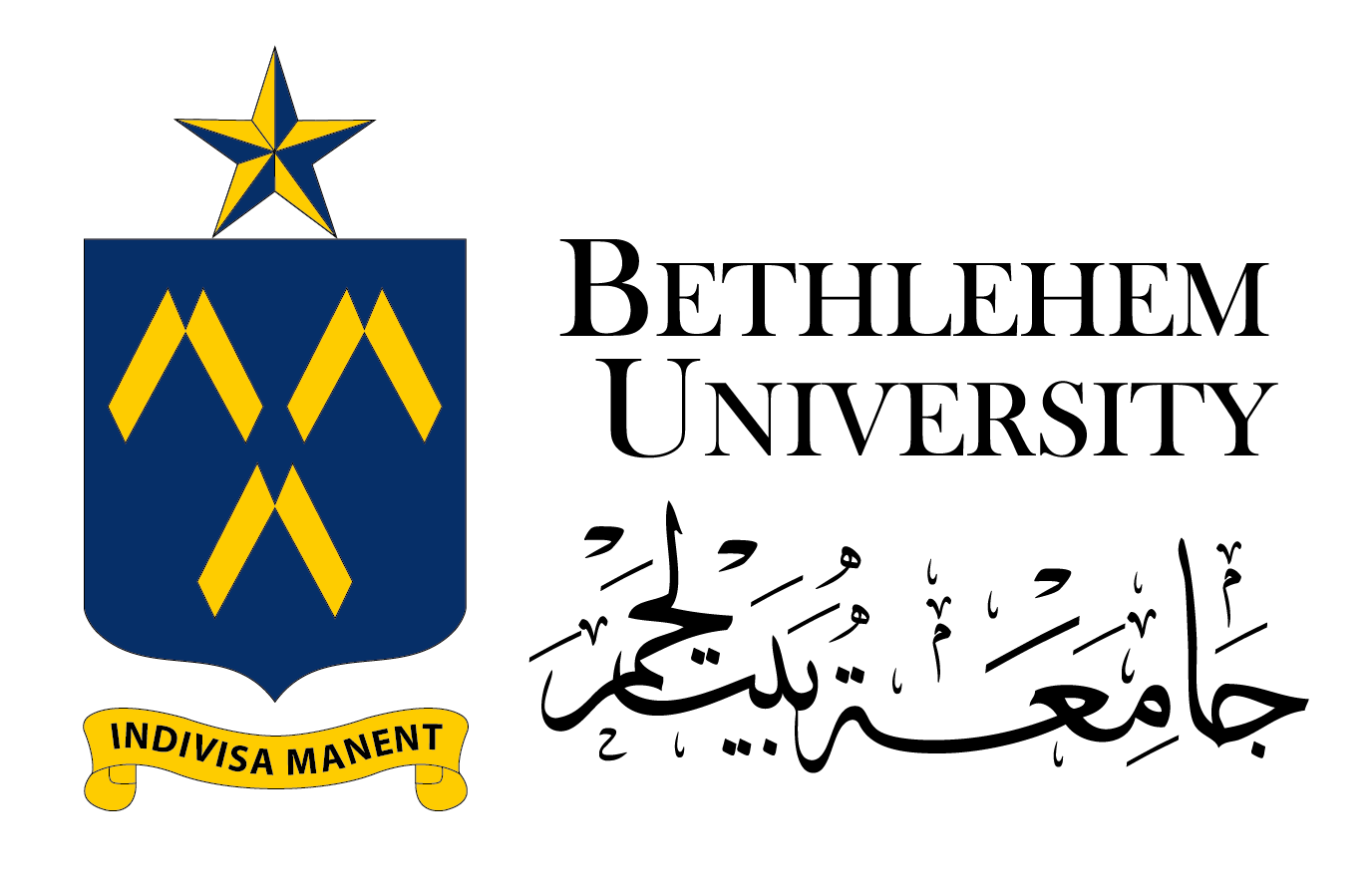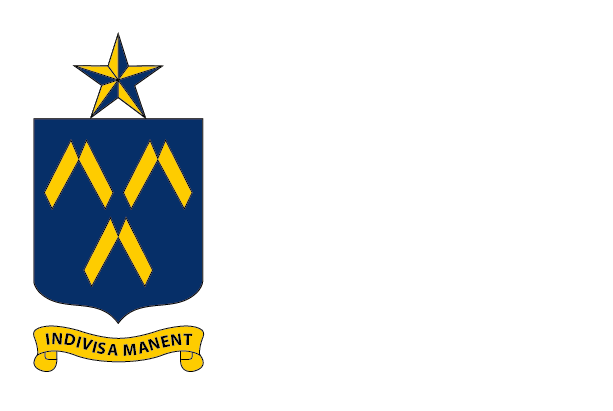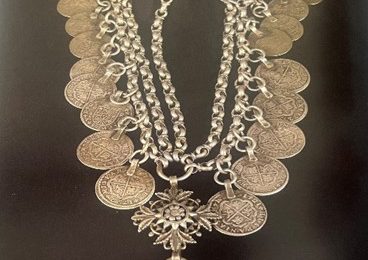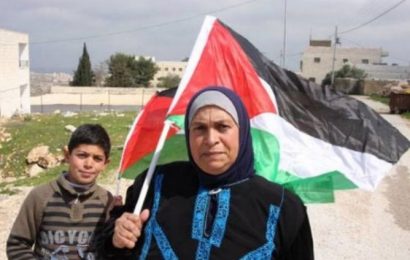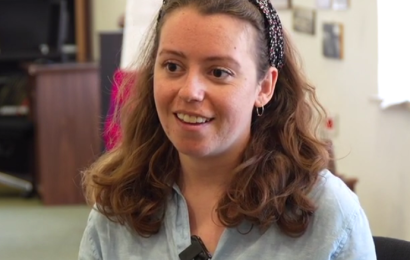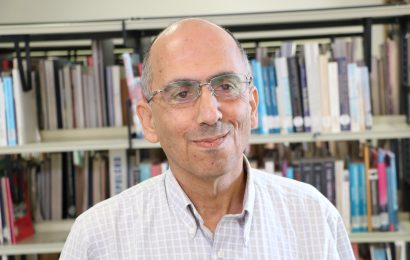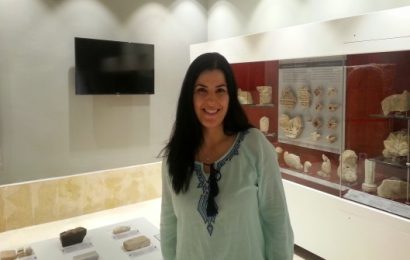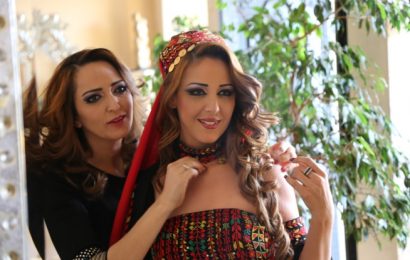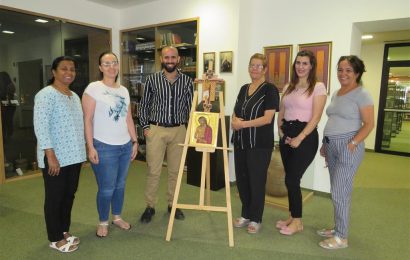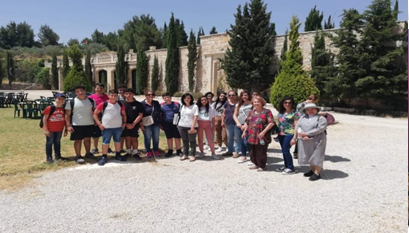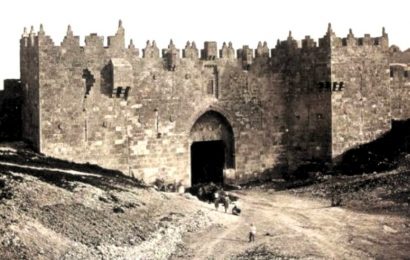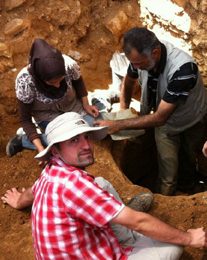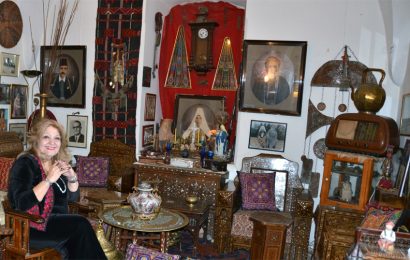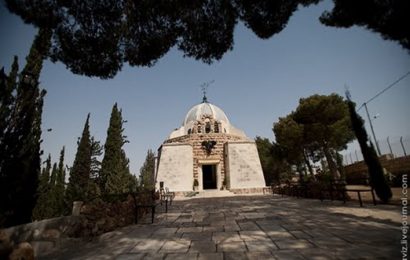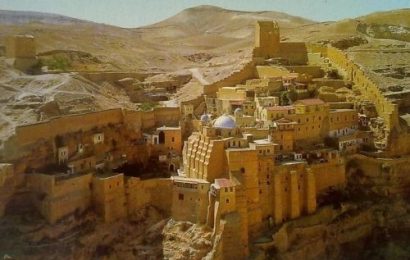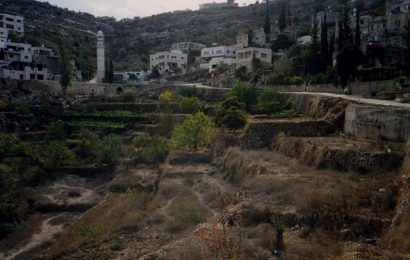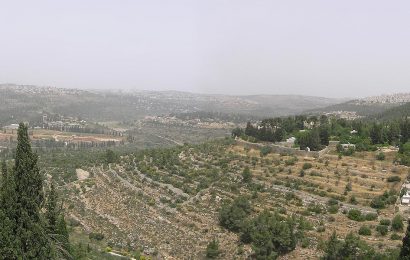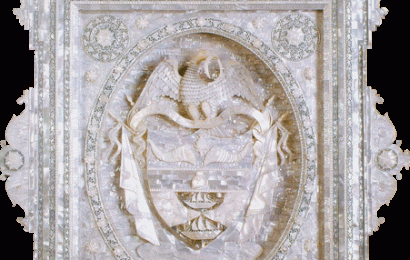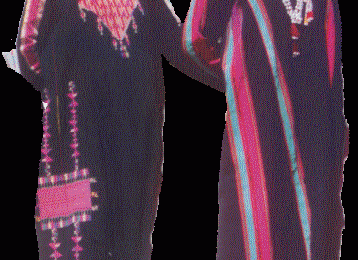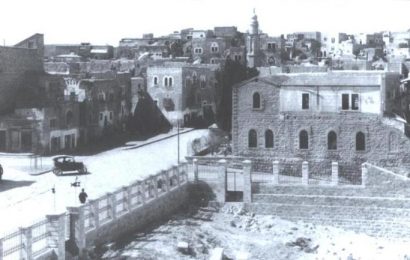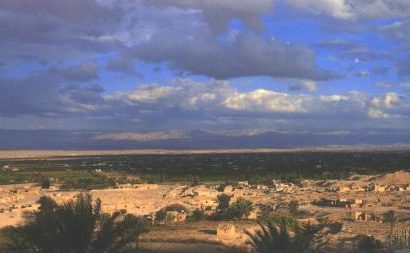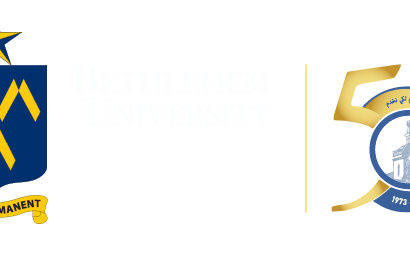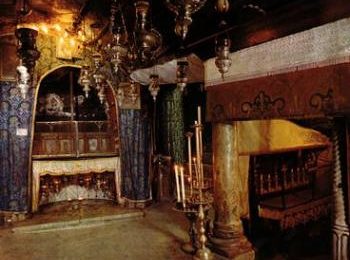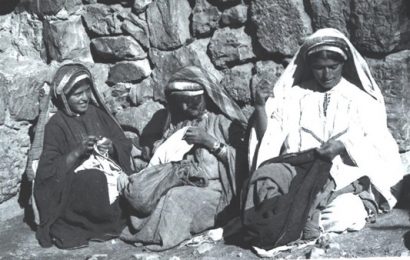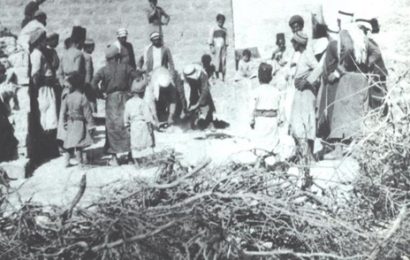Widad Kawar, often referred to as the “Mother of Heritage,” is a Palestinian art historian and collector deeply committed to preserving Palestinian and Jordanian ethnic and cultural arts. Born in 1931 in Tulkarm city, she was the only daughter among five siblings in a Palestinian Christian family. Widad’s family relocated from Tulkarem to Brummana in […]
Fatima Breijiyeh goes daily to her land to plant and irrigate and take care of her crops. She has a special preference for organic farming. She herself, her family, and her customers consume what she plants. She says that her customers can distinguish between all her various plants. Each has a special and different taste, […]
Najla Abdellatif is a Palestinian environmental activist who’s striving to empower others to take ownership of moving towards a more sustainable life. Through her blog “Zero Waste Palestine,” Najla sheds light on climate change-related issues and promotes sustainable and waste-free practices for Palestinian and Middle Eastern households. Najla had a role as a Civil Society […]
Prof. Mazin Qumsiyeh teaches and does research at Bethlehem University and Birzeit University. A Palestinian born in Beit Sahour, he is the founder and director of the Palestine Museum of Natural History (PMNH) and the Palestine Institute for Biodiversity and Sustainability (PIBS) at Bethlehem University. He previously served on the faculties of the University of […]
Iman Saca was born in Bethlehem to Palestinian Christian parents; she went to St. Joseph School in Bethlehem and Talitha Qumi in Beit Jala. After the first Intifada started in 1987 Palestinian universities were closed, and her grandparents in the United States suggested to her and her brother to go to the USA to pursue […]
Heidi Hannouneh / Khair is an artist and fashion designer from Beit Sahour, where she grew up and was inspired by her father to become a fashion designer. She digs into the precious treasures of Palestine, works to highlight them and sweep away the dust of history from them, and present them in a youthful, […]
Nicola Juha was born in Bethlehem and went to Terra Sancta School for his elementary and secondary education. He studied law at Birzeit University near Ramallah. He loved painting since he was young. He received a prize in an Italian drawing competition when he was still at school and won a prize once again for […]
The Library Team of George Nasra Turathuna Center organizes an annual youth summer camp. This year, it was from the 17th to the 28th of June 2019. Fourteen boys and girls from different schools participated with ages between 12 and 16 years old. The course/workshop this year focused on painting on glass, with Mrs. Tania […]
This scholarly article – in Arabic – entitled “Gates of Jerusalem” written and published in “Jordan Journal for History and Archaeology” by Dr. Omar Abed Rabbo, will be presented in the e-turathuna section of the University Library. We are happy and proud to present Dr. Omar’s erudite work and grateful to him for sharing it to our […]
Spring Term 2018 “Welcome back” to e-turathuna as we commence Spring Term 2018. We started the academic year 2017-2018 featuring a new genre – “the interview” –in an interactive encounter with Palestinians whose lives are marked with a “passion for turath.” Fall Term featured Ms. Maha Saca, a Bethlehemite and a generous donor of Bethlehem […]
It might as well be necessary as we embark on a new literary genre to “re-present” e-turathuna by going over what our homepage states about this very special section of the Library. Long before its refurbishment, Turathuna Center has always been the Library’s centerpiece. In its more than three decades history of service, researchers from various parts […]
Welcome once again to the Library’s e-turathuna! With Christmas approaching, we are featuring a holy site that is closely knitted to the events that unfolded that joyful eve when the whole world awaited the coming of our Saviour Jesus Christ the Lord. “GLORIA IN EXCELSIS DEO!” is the theme echoed during this historical evening with […]
Jabra Ibrahim Jabra is Bethlehem’s homegrown writer, artist and painter. Turathuna Centre at Bethlehem University has a collection of his books on a special shelf just dedicated for him. Some of his representative paintings were showcased by Turathuna Centre for Palestinian Heritage during the 40th Jubilee year of the foundation of Bethlehem University. More Facts about Jabra Ibrahim […]
The Dome of the Rock in Jerusalem is a magnificent monument and an added great treasure in world architecture. The area on which it was built is one of the holiest places on earth for Muslims, Christians and Jews alike. Known in Arabic as Masjd al-Aqsa (the farthest mosque), it occupies the centre of a […]
Over 100 monasteries flourished in the Judean desert to the east of Bethlehem during the fourth through sixth centuries. The monastic movement became quite successful so that more than a hundred of monasteries as a way of life blossomed in the desert. Monasteries are places where monks sometimes shared their whole life together and in […]
Battir is a Palestinian village south west of Jerusalem. It is surrounded by traditionally irrigated, beautiful terraces, filled with eggplants, peppers and olive trees. Some decades ago, the train to Jerusalem used to stop in Battir; next to the railway are the unique remains of the Ottoman train station, which was the spot of a busy vegetables […]
Ein Karem is the birthplace of John the Baptist (Luke 1:57). The Virgin Mary visited her cousin Elizabeth who lived in Ein Karem (Luke 1:39–56); and the Caliph ‘Umar Ibn al-Khattab passed by the village and held prayers in it during the Islamic conquest.Ein Karem means “Spring of the Vineyard,” and is so named because of the […]
Mother-of-pearl was traditionally a main handicraft in Bethlehem. It is believed that mother-of-pearl was introduced by Franciscan monks who came from Damascus to the Bethlehem area around the 15th century.With the presence of the order of St. Francis of Assisi in the Holy Land around the late 1600s, religious artifacts gained in economic importance. One […]
In the Galilee region the main costume worn by the village women is a type of coat with short sleeves and a front opening. Decoration consists of brightly colored taffeta patches appliquéd inside or outside of the front opening and the motifs are generally geometric. The dresses in Ramallah area have restrained patterns usually in […]
Bethlehem, Manger Square,1930s A house in Ramallah Shahwan houseBeit Jala A quarter inEast Jerusalem Via Dolorosa, 1936 The dwellings of Palestinians vary depending on location and family wealth. The design of these houses shows strong Islamic influence with arched roofs, ceilings, doorways, and windows.In urban areas, houses are typically close together lining narrow streets with over-hanging […]
The origin of the name “Jericho” is from the Semitic language. It is a Canaanite word that means “city of the moon.” The word is derived from yeriho or yarah. According to Anis Freiha, the Canaanite God Yarah gave its name to Jericho, called Ariha in Arabic. Jericho is the Biblical name, “city of palm trees,” while its Arabic […]
The tabun is a primitive oven made of unbaked clay fashioned by Palestinian country women. It is an oven used to bake bread and cook. The oven (tabun) itself is covered by dry manure spread all over its external surface while inside the bottom is covered with small stones called “ruddef.” On the top of […]
“Do not be afraid; for behold I proclaim to you good news of great joy … today in the city of David a Savior is born for you” (Lk 2:10-11). The message of Christ’s coming, brought from heaven by the voice of angels, continues to echo in this town, just as it echoes in […]
A very old dowry hat made of cotton, embroidered in silk and covered with Turkish coins. Extended from the side panels are silver chains to which are attached pieces of ‘amber and silver. Across the forehead are coral beads and silver pendants, suspended from short chains. The headdresses were made commercially by Bethlehem women for […]
A girl normally began embroidery around the age of six or seven, and was taught cross-stitch and the motifs of her village by older girls or women. When she had learnt to sew neatly, she began embroidering the panels of her trousseau garments, and took her mother’s measurements to gauge her size. Dresses were sent […]
From the moment of birth, parents began to consider future marriage for their children. One of the reasons for this early matchmaking was the preference for marriage of the same village and the same kin group. Marriage was an important social and economic alliance between two families. A bride and her bridegroom had little to […]
